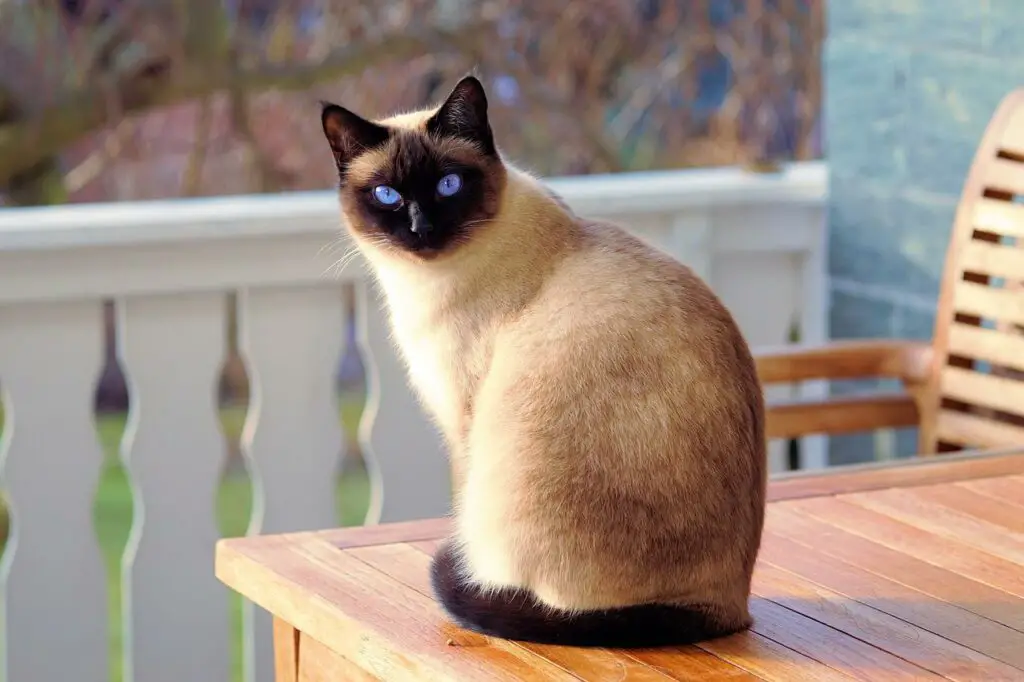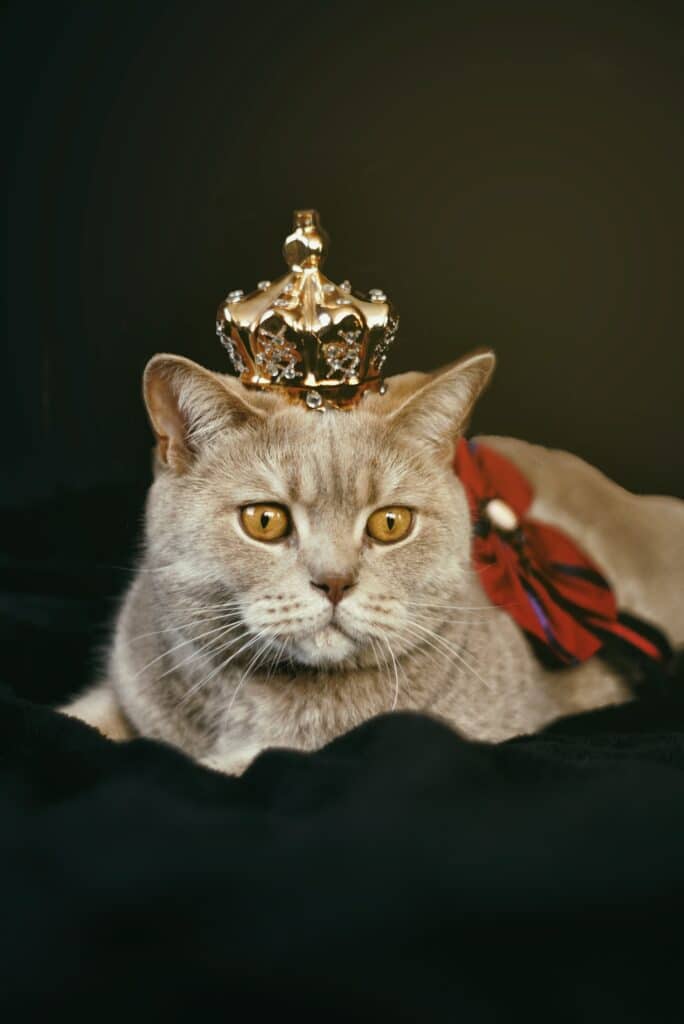A scoop of ice cream is delicious, relieves stress, and cools us down on those scorching days.
Pets love ice cream too.
Having a cat and a dog is exciting until it comes to feeding them.
The confusion on whether you can share some of your dog’s treats with the cat is actual.
But can a cat die from eating dog ice cream?
So, can cats eat dog ice cream?
Yes, but sparingly.
Although dog ice cream isn’t toxic, your cat shouldn’t eat that in large quantities.
Canines and felines have different nutritional needs; therefore, dog-friendly treats may not align with cats.
Instead, feed your cat ice cream with cat-safe ingredients or other frozen alternatives.
This article highlights everything about dog ice cream and its effects on cats.
The benefits and risks involved, what you should do in case of an accident, and the alternatives available.
So, without further ado, let’s get started.

What is dog ice cream made of? Is it safe for cats?
Ice cream, in general, is made with dairy (milk), sugar, and cream.
Since most dogs are lactose intolerant, dog-safe ice cream contains plain yogurt instead of milk and a mix of fresh fruits like berries, mango, vanilla, and coconut.
Other dog ice cream varieties in the commercial space contain milk and lots of sugars.
These contents are not toxic to cats but can cause health issues if consumed largely.
Dog ice cream is specifically made for dogs, so pick cat-friendly alternatives if you want a regular treat for your cat.

What are the risks of feeding your cat dog ice cream?
Lactose intolerant
Even though dog ice cream may not contain toxic additives, it typically has lactose found in dairy.
Cats’ bodies are not designed to digest lactose well.
Cats have an enzyme that helps break down their mother’s milk during weaning; however, less lactase is produced as they age.
This inability to deal with dairy milk can cause bloating, gas, stomach pain, vomiting, or diarrhea.
High-fat and sugar content
Commercial dog ice cream is loaded with sugars unnecessary in your feline’s diet.
Yogurt in dog ice cream may contain a high-fat content safe for dogs but too much for cats—the difference in size.
Consuming these regularly, your cat risks weight gain leading to obesity.
Similarly, cats lack the digestive capacity to consume carbs or high-fat levels in their diet.
Toxic flavors
Chocolate ice cream is a no to felines.
It contains cocoa, which has theobromine toxic to cats and can be fatal even in small amounts.
Sugarless flavors contain extremely toxic sweeteners like xylitol.
A small amount of xylitol can elicit sudden insulin release, resulting in hypoglycemia, catastrophic to cats.
What happens if my cat eats dog ice cream?
Although dog ice cream isn’t meant for cats, it doesn’t contain toxic ingredients that can harm your pet—they should be alright.
However, most cats have a lactose intolerant problem which may manifest as vomiting or diarrhea if they consume dog ice in large quantities.
If your cat consumes dog ice flavor with chocolate or artificial sweeteners besides fruits, it could be a great danger to them.
Too much sugar in your pet’s blood is harmful, plus some sweeteners may contain toxic ingredients.
The side effects may include bloating, flatulence, diarrhea, or worse conditions like diabetes and obesity.
If you see these symptoms, don’t panic; contact your vet immediately as you observe them for severe symptoms.

What to give your cat instead of dog ice cream
- Cat ice cream – These contain cat-friendly ingredients, and you can make them or get some from the store. Consult your vet to know the flavors and size best for your cat.
- Frozen tuna – Cats are obligate carnivores, and any meat, especially fish, is a favorite for most. Freezing tuna adds a crispy texture they’ll enjoy while maintaining a healthy checklist.
- Ice cubes – On those hot days, give cats some cubes or place some in their food. It makes a perfect cold treat for cooling down and staying hydrated for longer on those summer days.
Other cold treats safe for cats are;
- Cat-friendly ice cream like cat laws (specifically made for cats)
- Blend frozen fruits like berries mixed with goat’s milk
- Frozen low-sodium broth
- Cat-friendly peanut butter blended with bananas
- Frozen plain canned pumpkin
- Fermented frozen slushy
Frequently asked questions (FAQs)
How do I treat xylitol poisoning in my cat?
Xylitol toxicity requires immediate vet intervention as it can turn from mild to worse in a short timeline, usually 30 minutes after ingestion.
Mild toxicity symptoms include decreased appetite, lethargy, skin yellowing, and vomiting.
Severity manifest in seizures and kidney failure.
Treatment includes hospitalization with full-time monitoring and care, administration of liver-protective components, and blood transfusion in severe cases.
How much ice cream can I feed my cat?
Naturally, cats don’t like cold foods, so it’s unlikely they’ll bother overeating.
How much ice cream to feed your cat depends on their size and dietary needs.
A few licks will be enough for them as an occasional treat.
Consult your vet to find out any preexisting health issues that may hinder the intake of ice cream ingredients.
What ice cream is safe for cats?
Ice cream made with cat-safe ingredients is okay.
Preferably, whole milk with less sugar and fats.
Although cats can’t taste the sweetness, Vanilla ice cream is also a good option.
Preferably, add fresh fruits to frozen yogurt for nutritional value instead of commercial ice cream, which is unhealthy.
To conclude
It’s okay to let your cat have a few licks of dog ice cream but don’t let them plow on a whole bowl.
Unlike dogs, cats can’t handle well the increased carbs and fat content in dog ice cream.
If you suspect they overate dog ice cream, watch their behavior and contact your vet.
Otherwise, cold alternatives like cat-safe ice cream are friendly for your feline friend.
Overall, it’s safe to keep your cat away from dog ice cream.
- What Dog Breeds Have Pink Skin? - March 24, 2023
- What Are the Most Inspiring Dog Breeding Quotes? - March 20, 2023
- Can Pheromone Spray Help Improve Dog Breeding Results? - March 19, 2023








